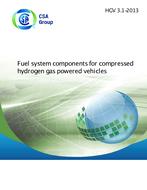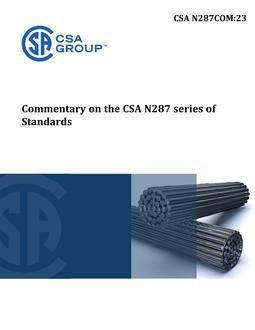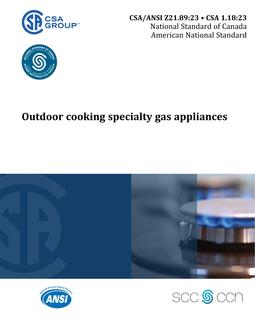
CSA HGV 3.1-2013
- Comments Off on CSA HGV 3.1-2013
- CSA
Preface
This is the first edition of HGV 3.1, Fuel system components for compressed hydrogen gas powered vehicles. This Standard is considered suitable for use for conformity assessment within the stated scope of the Standard.
Scope
1.1 This standard establishes requirements for newly produced compressed hydrogen gas fuel system components, intended for use on hydrogen gas powered vehicles as listed below:
- check valves;
- manual valves;
- manual container valves;
- automatic valves;
- gas injectors;
- pressure indicators;
- pressure regulator;
- pressure relief valves;
- pressure relief devices;
- excess flow valves;
- gas tight housing and ventilation lines and passages;
- rigid fuel lines;
- flexible fuel lines;
- filter housing;
- fittings; and
- discharge line closures.
Note: It is recognized that other components not specifically covered herein can be examined to meet the criteria of HGV 3.1 and tested according to the appropriate functional needs. 1.2 This standard applies to devices which have a service pressure of either 25MPa, 35MPa, 50MPa, or 70MPa hereinafter referred to in this Standard as the following:
- “H25” – 25 MPa;
- “H35” – 35 MPa;
- “H50” – 50 MPa;
- “H70” – 70 MPa.
1.3 This standard addresses the pressure containment, performance, and safety characteristics of components listed section 1.1. 1.4 This Standard does not apply to the following:
- hydrogen gas fuel system components incorporated during the manufacture of motor vehicles originally manufactured in compliance with the Federal Motor Vehicle Safety Standards (FMVSS) for Compressed Hydrogen Gas Fueled Vehicles and the Canadian Motor Vehicle Safety Standard (CMVSS);
- fuel containers;
- stationary gas engines;
- container mounting hardware;
- electronic fuel management;
- refueling receptacles; or
- three-way valves.
1.5 In the case of conflict between this Standard and Federal, Provincial, State, or local requirements, the government requirements take precedence. 1.6 In this Standard, “shall” is used to express a requirement, i.e., a provision that the user shall satisfy in order to comply with the standard; “should” is used to express a recommendation or that which is advised but not required; “may” is used to express an option or that which is permissible within the limits of the standard; and “can” is used to express possibility or capability. Notes accompanying clauses do not include requirements or alternative requirements; the purpose of a note accompanying a clause is to separate from the text explanatory or informative material. Notes to tables and figures are considered part of the table or figure and may be written as requirements. Annexes are designated normative (mandatory) or informative (non-mandatory) to define their application. 1.7 This standard contains SI (Metric) corresponding to the yard/pound quantities, the purpose being to allow the standard to be used in SI (Metric) units. (Standard for use of the International System of Units (SI): The Modern Metric System, IEEE/ASTM SI I0 or Metric Practice Guide, CAN/CSA Z234.1 are used as a guide in making metric conversion from yard/pound quantities.) If a value for a measurement and a corresponding value in other units are stated, the first stated value is to be regarded as the requirement. The given corresponding value may be approximate. If a value for a measurement and a corresponding value in other units are both specified as a quoted marking requirement, the first stated unit, or both shall be provided.
Product Details
- Edition:
- 1st
- Published:
- 03/01/2013
- ISBN(s):
- 9781554919956
- Number of Pages:
- 73
- File Size:
- 1 file , 2 MB
- Product Code(s):
- 2421970, 2421970



